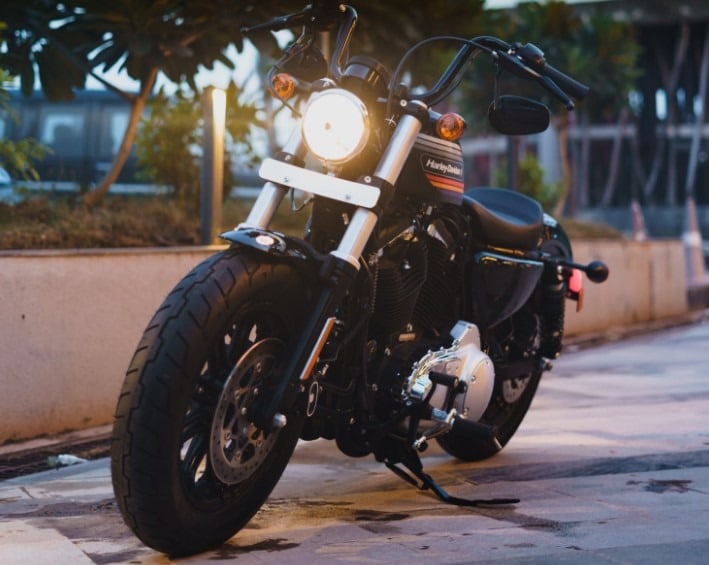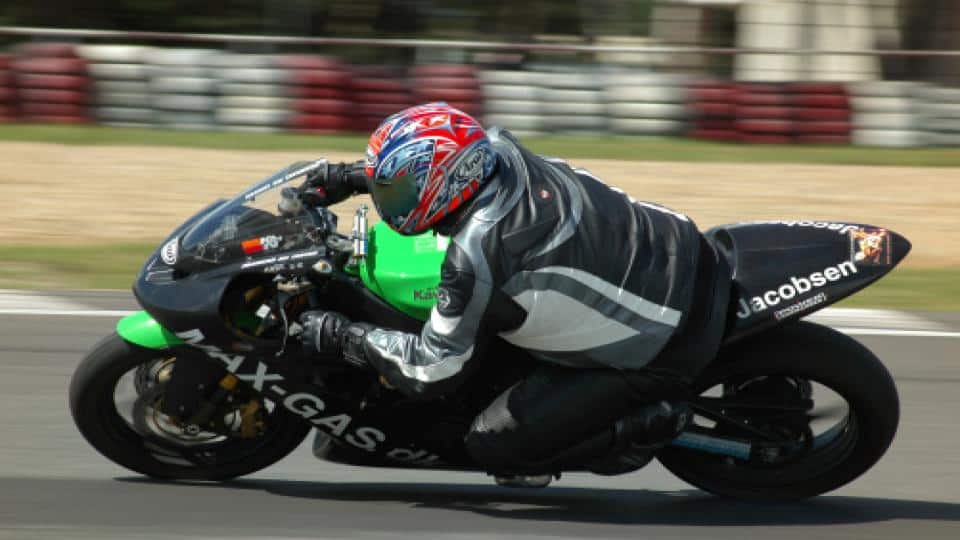How to Handle a Heavy Motorcycle – Tips and Training Exercises

Every motorcycle enthusiast loves a heavy cruiser like Harley Davidson Fat Boy until they have to ride it. And that is because, at high speeds, riding cruisers is quite fun and easy, but maneuvering or slow riding can be quite challenging. Maneuvering huge cruisers in tight spots at a very slow speed can be very difficult for inexperienced riders. In fact, many riders don’t have the skills needed to control a heavy bike.
Have you ever seen a Harley Davidson rider wobble through slow traffic while paddling with their feet and then stop and drop the bike? I bet you have, and that is because riding a heavy bike in slow traffic is not as easy as it looks. Handling a heavy bike takes a lot of practice and patience. So if you want to learn how to handle a heavy motorcycle, please read on.
Table of Contents
Learning How to Handle a Heavy Motorcycle Takes Time
A heavy motorcycle is bigger than average bikes and has more power. Therefore, it needs more skill and experience to be able to handle it safely. This is actually the main reason why new riders use lightweight bikes when training. After all, giving a learner a 200HP sportbike or an 800 lb. cruiser is a recipe for disaster. Unfortunately, many newbies put themselves in this position when they buy heavy bikes as their first motorcycles.
Another reason why newbies need a lightweight bike is that heavy bikes are quite costly. Therefore, dropping them is a huge fear for new owners. The thought of seeing your expensive machine on the ground can be quite painful. So, before upgrading to bigger bikes, you should use smaller ones for more than two years.
Remember, the technique for making emergency stops is the same for both heavy and small motorcycles. The technique for making U-turns is also the same for small, medium, and heavy motorcycles. The only difference is that lightweight bikes are more forgiving with sloppy techniques than heavy ones. So make sure you perfect your riding techniques with a smaller motorcycle before upgrading to a heavier bike.
You have to perfect your riding techniques using a smaller bike before trying a heavy motorcycle. And even after perfecting your skills on smaller bikes, you should regularly practice on roads with less traffic.
How to Handle a Heavy Motorcycle: Top Tips
Heavy bikes are more difficult to handle than lighter ones, and making a simple mistake can be quite catastrophic. You might end up damaging the bike or injuring yourself when the bike falls. So here are a few unique tips for handling heavy bikes that can help you perfect your riding techniques:
1. Parking

Parking a heavy bike correctly is the first technique you must perfect when coming from a turning point or straight road. So, when looking for a parking spot, you should select a space with a smooth, flat, and non-slippery surface. Controlling your bike on a flat surface can be quite easy, but if it has an incline, make sure it is an uphill slope. Otherwise, your bike will feel heavier when parking it. An incline will ensure that your bike doesn’t lean in when parking, making it easier for you to lift the side stand.
Make sure you park using the side stand since the bike is heavy instead of the center stand.
2. Controlled Stops
Another key technique you must learn is being in control when stopping the bike. Unfortunately, this is one of the main areas where many riders drop their bikes, and that is attributed to poor technique. So at the stop sign, you should keep the handlebars straight and your eyes and head up. And when approaching the stop, you should halt your bike slowly using the rear brakes.
If your heavy bike loses balance at the stop, it will fall over, so instead of using both brakes, you should use the rear ones. The rear brakes can give you more control when stopping.
3. Stop and Go
After developing a proper stop technique, you can teach yourself the stop and go technique. This technique will help you perfect your stopping technique since you will do it several times. This exercise will help you develop a muscle memory that will ensure that every stop is done perfectly.
Another area riders struggle with heavy bikes is turning from a stop. Many riders have a problem with making right or left turns within their lane from a stop sign. To avoid accidents, you should look where you want the bike to go and turn the handlebar before making the turn. This will ensure that you stay in your lane and turn safely. You can practice with a smaller bike before transitioning to the bigger one.
4. Use the Feet When Turning

Taking a sharp corner with a heavy bike can be quite challenging in a mobile position. Therefore, when riding a heavy bike, you can use your right foot when turning to the right and left when turning to the left. This technique will help you take turns easily, even when cruising at high speed. Putting your right foot down when turning to the right can help you adjust your sitting position and turn easily.
5. Tilt and Sit-up Straight When Making Sharp Turns
Making tight turns will require leaning and steering the motorcycle. So when making a tight right turn, you should lean your bike to the right and then extend your right foot in that direction. This trick will ensure that you make the turn immediately. But make sure you are seated straight when turning. Sitting straight gives you control over the leaning bike when making the turn.
6. Handle the Throttle, Clutch, and Brakes Smoothly
Cruisers are known for their weight and power; therefore, you should never put a lot of pressure on the clutch and throttle. Cruising smoothly gives you perfect control over its speed and handling. Plus, when riding at low speed, you don’t have to use the front brakes. And that is because using the front brakes will force the weight to move to the front suspensions causing you to lose balance. Simply stop the bike using the rear brakes and then put your left foot down for full control. The front brakes should only be used when stopping immediately.
7. Choose a Solid Footgear
Nobody feels secure maneuvering more than half a ton wearing a pair of unsupportive squishy sneakers. Therefore, make sure you invest in high-quality boots that can provide superior protection and a better foothold. A solid pair of riding boots can prevent slippage and reduce abrasion when taking sharp corners.
8. Always Keep Your Head Up
When cruising slowly in traffic, you should always keep your head up and focus on the road ahead. Looking straight ahead can help you understand the traffic and know exactly when to slow down or stop. Keeping your head up can help you focus more on the road and reduce the likelihood of causing an accident. After all, the added weight comes with extra braking distance, which must be maintained when riding.
9. Hit the Gym
Handling a heavy bike when riding at a slow speed or turning requires a lot of strength, especially if you don’t have the weight. So make sure you start working out regularly and bulk up your muscles. Regular workouts can give you the needed strength and confidence to handle a heavy bike even when cruising in slow traffic. Working out is not a quick fix; in fact, it might take a few months for you to build some muscle. But working out will make a huge difference and also improve your riding experience.
10. Practice Often
Practice makes perfect, so the best solution for handling a heavy motorcycle is practicing. If you love riding a heavy bike, then you have to perfect all the above techniques by regularly practicing when there is less traffic. Practicing regularly will help you notice a sign of mistake when riding and be aware of the road. Plus, occasional training can help you avoid all the common mistakes made by newbies.
Final Thoughts
It’s a known fact that many riders struggle when riding a heavy motorcycle, especially with turns and slow speeds. Riding can be even more complicated for newbies who have less than two years of experience. But did you know that the technique needed to ride a heavy and small motorcycle is the same? And the only difference is that the heavy ones are not forgiving of sloppy technique.
Therefore, before upgrading to heavy motorcycles, you need to perfect your riding technique. After all, heavy bikes are more powerful and heavier, so any mistake can be quite catastrophic. It can make you lose control and drop the bike or get injured. But with the above tips on how to handle a heavy motorcycle, you can learn to be safe and have fun on the road.
Remember, practice makes perfect; so, make sure you practice regularly until you perfect your techniques.
